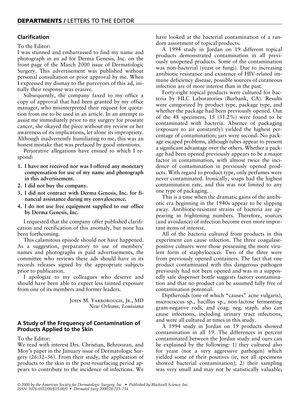A Study of the Frequency of Contamination of Products Applied to the Skin
July 2000
in “
Dermatologic Surgery
”

TLDR Many skin products get contaminated with bacteria, especially if they're in jars or previously opened.
In a study published in the January 2000 issue of Dermatologic Surgery, researchers investigated the bacterial contamination of 48 topical skin products. The study found that 15 of the 48 products (31.2%) were contaminated with bacteria. The rate of contamination was higher in products that were not in packaging (exposed to air) and in jars, while tubes had a lower rate of contamination. Previously opened packages had almost twice the incidence of contamination compared to unopened ones. All types of bacteria found in the study were capable of causing infections, with three cases involving a more virulent form of staphylococci, two of which were from previously opened containers. The study suggested that no product could be assumed to be completely free from contamination, highlighting the importance of considering sources of infection due to the rise of antibiotic-resistant bacteria. The authors recommended a larger study to draw more definitive conclusions about the effect of packaging on contamination risk and suggested that standardization of packaging might be warranted.


